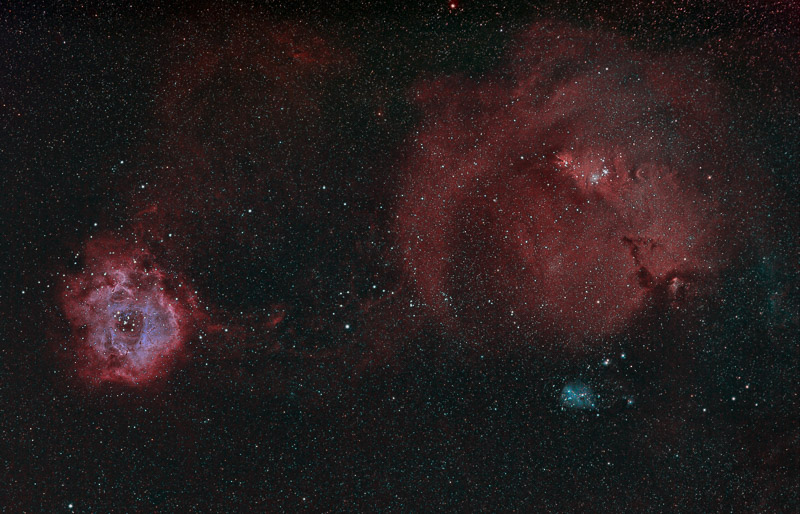The 88 constellations are a way of mapping the entire sky and a way to navigate/orientate yourself and find targets. My plan over the next few posts is to highlight constellations that lie within the Milky Way and to memorize them, keeping the blog post as a reference. Using the star map I have in the observatory these constellations are; Canis minor, Monoceros, Canis Major, Puppis, Pyxis, Vela, Carina, Musca, Crux, Centaurus, Triangulum Australe, Circinus, Lupus, Norma, Ara, Telescopium, Scorpius, Ophiuchus, Corona Australis, Sagittarius, Scutum, Serpens and Aquila. These 23 icons stretch from one horizon to the other with Sagittarius being the center of the Milky Way. I want to commit to memory a few basic facts for each asterism and will be primarily using https://www.constellation-guide.com/ where you can visit for a more thorough analysis of the constellation. I’ll also be referring to Constellations: A Field Guide To The Night Sky by Giles Sparrow, an excellent guide for the night sky. All additional links and videos will be embedded in the blog. J
Canis Minor
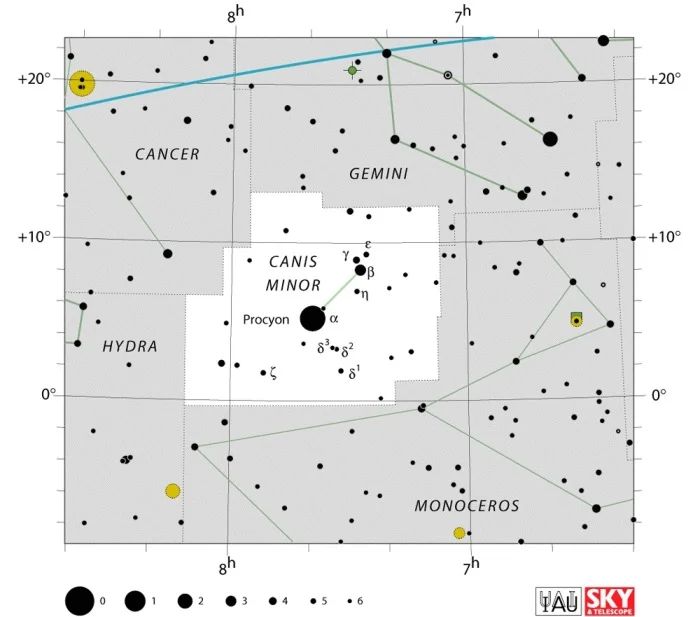
Canis Minor contains two IAU (International Astronomical Union) formally named stars – Procyon and Gomeisa. Procyon (Alpha Canis Minoris) is the seventh brightest star in the night sky at Mag 0.3. It is also one of the closest bright stars to earth being 11.4 lyrs distant from the sun. Canis Minor is one of the dogs following Orion the Hunter along with it’s constellation counterpart, Canis Major.
Procyon is a binary star system having a faint white dwarf companion star – Procyon B. Procyon A has 1.4 solar masses, a white main sequence star and is 7.5 times more luminous than the Sun. Procyon B’s magnitude is 10.7 with 0.6 solar masses. Having a white dwarf in such close proximity would make planetary orbits and/or life unstable. Additionally most of it’s light is in the ultraviolet spectrum.

Gomeisa, the second brightest star in Canis Minor, is a hot, B8-type main sequence star classified as a Gamma Cassiopeiae variable.
It rotates rapidly and exhibits irregular variations in luminosity because of the outflow of matter. These stars are also known as shell stars because they are surrounded by a disk of ejected material, which is heated up by the stars’ emissions. Constellation guide
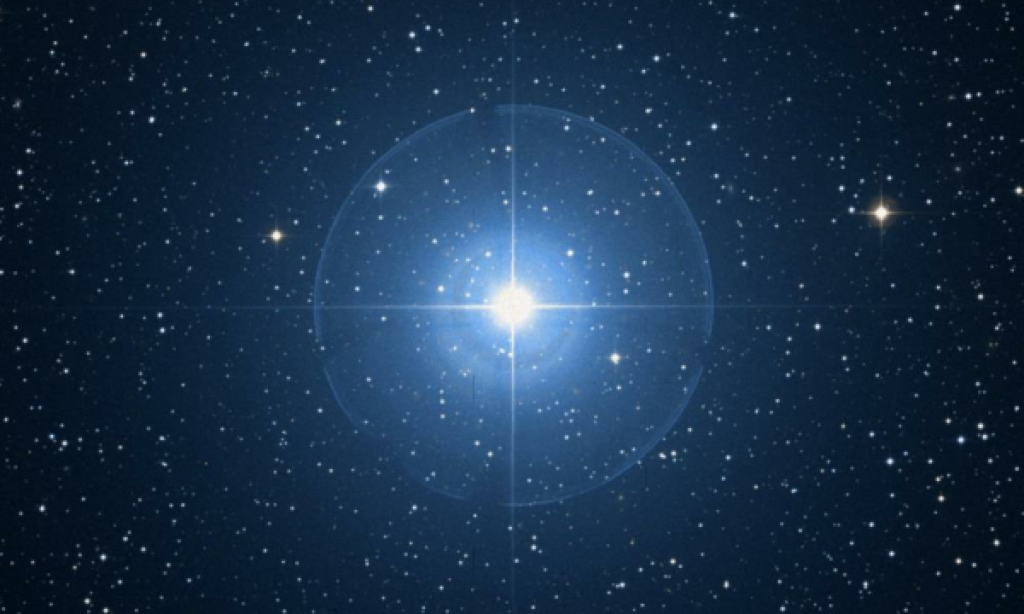
Monoceros

Monoceros (the unicorn) is the next constellation along the line of the Milky Way and I know that there are some interesting targets here. What I didn’t know is that it is part of the Orion Group – Something I’ll look at when focusing on the Orion constellation. There is a lot to look at – the Rosette Nebula alone contains a number of NGC entries and stars that are all worth investigation. However, this is more an exercise in learning key elements of the constellations to pass on to others concisely and to encourage interest in space. With that in mind the first star of note is definitely V838 Mon – check out the link below to see Hubble’s time-lapse capture of the surrounding dust expansion illuminated by it’s light after an outburst that saw it brighten for a few weeks in 2002.
V838 is a Variable red supergiant and has the stellar classification of M6.31. The star has an apparent magnitude of 15.74 and lies at a distance of 20,000 light years from Earth.
The cause of the event is still uncertain, but it resulted in a light echo, with the surrounding dust being illuminated by the star’s light. The star grew enormously in size, but did not expel its outer layers, which is what would normally happen in a nova event. The star has also increased in temperature and luminosity, but decreased in radius. It is now 15,000 times more luminous than the Sun and has a radius 380 times solar. Constellation guide.
Plaskett’s Star is a binary star system, that has an apparent magnitude 6.06 and is approximately 5,245 light years from Earth. It is a noticeable system because it consists of two blue O-type supergiant stars, one of the most massive known binaries and comparable to the Eta Carinae system. Collectively, the two stars have a combine mass equal to over 100 Suns and an orbital period of 14.4 days.
A0620-00 – Black Hole. This is also known as V616 Monocerotis. The Black hole has been identified by it’s effect on it’s binary neighbour, a 11.2 magnitude K-type star. By caredul analysis of this star the mass of the unseen object is equal to 661% of our sun’s mass – too massive even for a neutron star and leaving only a black hole as an option. It’s accretion disk has been observed in visible light and X-rays. The_Spin_of_the_Black_Hole_in_the_Soft_X-ray_Transient_A0620-00
Nebula
The second main feature for me in this constellation undoubtedly is the Rosette Nebula or NGC 2244. It contains a number of different NGC numbers assigned to different areas of interest (NGC=New General Catalogue) and 2244 is for the stars in it’s center. However as these stars are primarily formed of the matter within the Nebula, this number denotes the entire object.
NGC 2244 is an open cluster located within the Rosette Nebula. It was discovered by the English astronomer John Flamsteed in 1690. The cluster contains several exceptionally hot, O-type stars that emit large amounts of radiation and generate stellar wind. The two brightest stars in the cluster belong to stellar classes O4V and O5V, have masses 50 and 60 times solar, and are 400,000 and 450,000 times more luminous than the Sun. The cluster is approximately 5,200 light years distant from Earth. It has an apparent magnitude of 4.8. The estimated age of the cluster is less than 5 billion years. constellation guide

The Christmas tree cluster and Cone Nebula fall under the one NGC 2264. Additionally in this area you’ll find the Snowflake cluster and Fox fur nebula which are well worth looking into in their own right. The Christmas tree cluster is around 2,400 light years away.
The star S Monocerotis marks the trunk of the Christmas tree, and another variable star, V429 Monocerotis, represents its top. The Cone Nebula is an H II region in the southern part of NGC 2264, about 2,700 light years from Earth. It was discovered by William Herschel on December 26, 1785. It is part of the nebulous region around the Christmas Tree Cluster. The nebula is 7 light years long. Constellation guide
There is WAY much more to explore within this constellation So check out all of the links etc for a deeper dive.
Canis Major
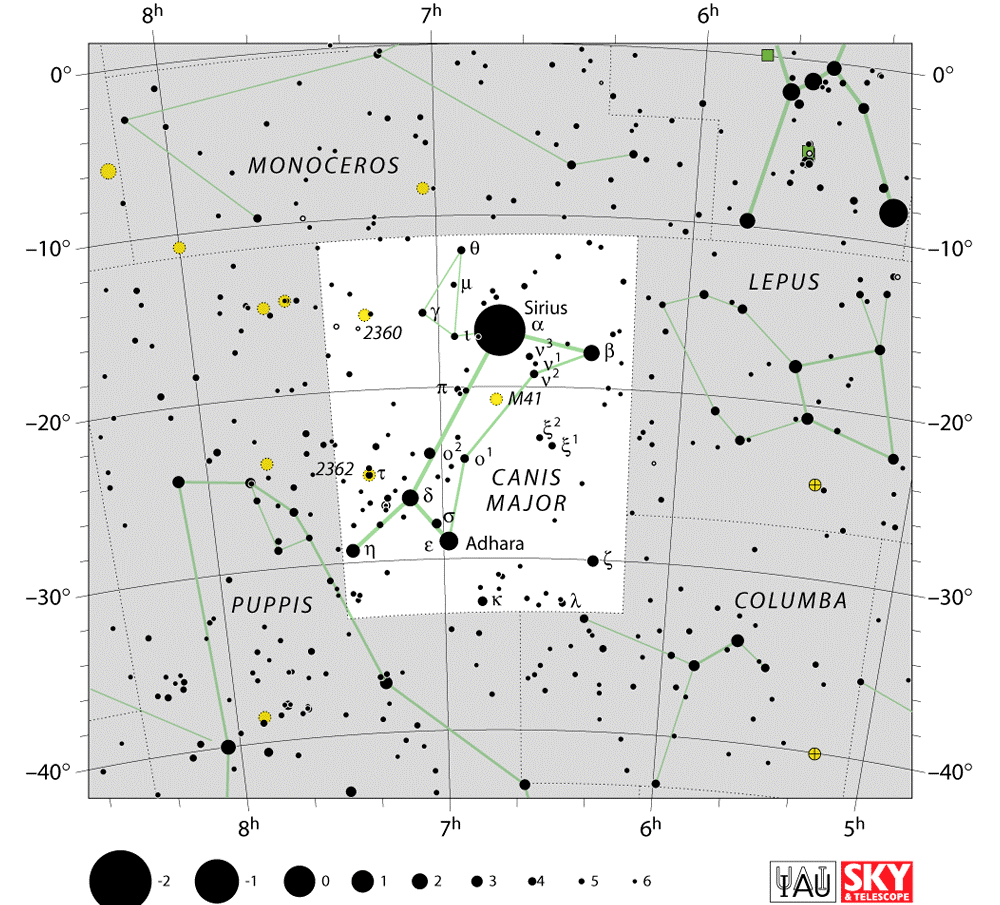
Canis Major is the constellation of the great dog who along with his counterpart Canis Minor follow behind their leader, Orion. The most noticeable object and the brightest star in the night sky is Sirius, known also as the dog star. It has an apparent mag of -1.42 and is 8.6 light years away, making it the fifth closest star to our own solar system. It is also a binary system.
Sirius A belongs to the spectral class A1V, and the dwarf to DA2. Sirius A has twice the mass of the Sun and is 25 more luminous. Sirius B is almost equal to the Sun in mass (0.98 solar masses) and is one of the most massive white dwarfs known. Constellation guide

For a great article on Sirius check out New Hubble Observations of the Sirius System on the Drew Ex Machina website
Adhara is the second brightest star in the constellation and is 430 lightyears away, however it hasn’t always been that way. According to the constellation guide, About 4.7 million years ago, Adhara was the brightest star in the sky. It was only 34 light years distant and had a magnitude of -3.99. No other star has ever been as bright since, nor is one expected to be in the next five million years.
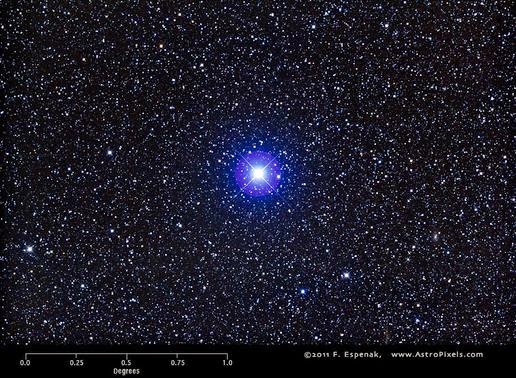
Canis Major Dwarf Galaxy
Check out the video on this Galaxy by Anton Petrov. The Galaxy’s discovery was in 2003 and is 25,000 light years away from Earth. Two reasons for why it’s discovery is so recent is because it lies behind the arc of the Milky and so is obscured by stars, dust and gas. It is also slowly being pulled apart by the gravity of the Milky Way and so is degraded and difficult to see. Eventually it will be completely absorbed into our galaxy. It may also have played a role in our sun’s formation.
Thor’s Helmet
At the centre of NGC 2359 lies a Wolf-Rayet star which has blown off this gas and dust and will end it’s life as a supernova. It’s 15,000 light years away and 30 light years in diameter. for a deeper look at Wolf-Rayet stars check out the papers associated with the Tarantula Nebula on my website.
Colliding spiral galaxies – NGC 2207-IC 2163
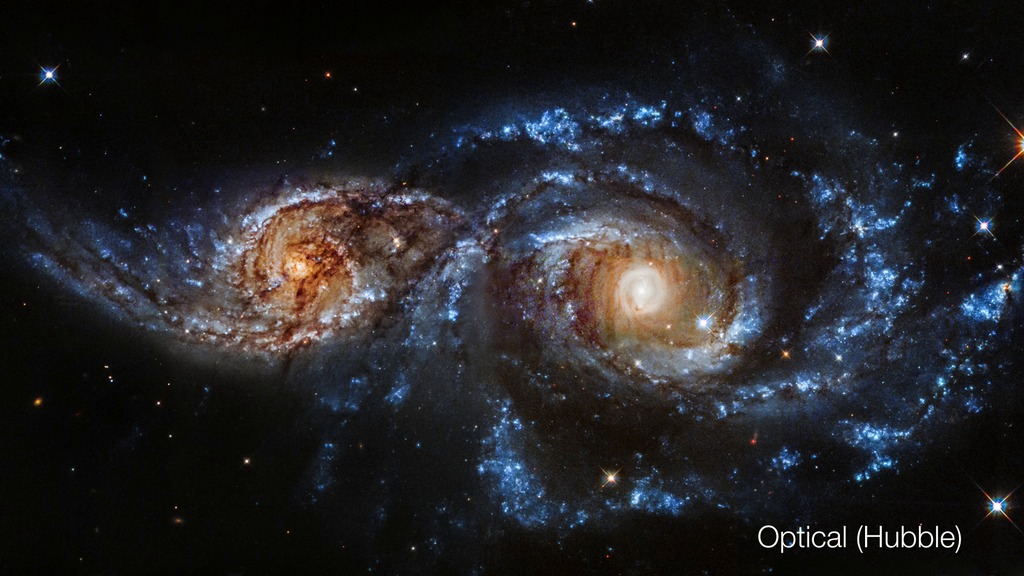
This is the last object I’m adding to my list of celestial objects purely because it’s such a beautiful image to see and certainly engages interest. Our galaxy will undergo a similar fate when we merge with the Andromeda galaxy and so these two galaxies can give us indications as to what such an event may look like. They were discovered by John Herschel in 1835 and are approximately 80 million light years away.

